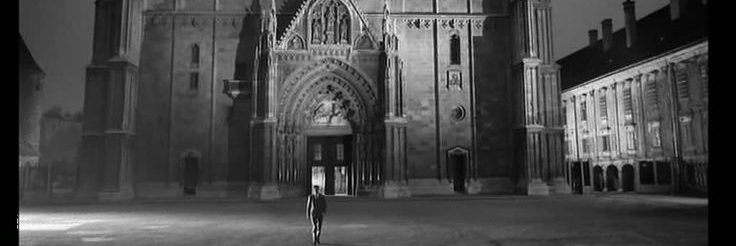
Back during my tenure at FIRST THINGS as managing editor, we ran a debate that we labeled “an exchange” between Edward T. Oakes, S.J., and Alyssa Lyra Pitstick, entitled “Balthasar, Hell and Heresy.” Hans Urs von Balthasar was one of the most profound Catholic theologians of the 20th century, perhaps its most important. (He also nurtured the work of Swiss Calvinist-turned-Catholic writer Adrienne von Speyr.) He was to Catholic thought what Karl Barth was to Protestant: the man you had to contend with if you were going to do theology during his lifetime.
Most interesting is that Balthasar was one of the maybe half dozen thinkers who could wrap their mind around Barth’s work, especially his capacious Church Dogmatics. (In fact, if you want an introduction to Barth’s work before wading in yourself, Balthasar’s The Theology of Karl Barth is a nice place to start. You could also try Justification by Hans Kung, but I wouldn’t mention it in mixed company. Speaking well of Kung among traditional Catholics is like my reading out from the works of William Tyndale on Thomas More’s feast day: prepare for some angry looks.)
Both Barth and Balthasar were charged with teaching a kind of universalism. Both denied it, and their best expositors demonstrate that these charges were false. But one can be forgiven if the great theologians’ language, unless parsed very finely, can easily lead one in that direction.
For Balthasar, it is his teaching on Christ’s Descent into Hell that is the main source of that particular controversy. In the above mentioned exchange, Pitstick charged Balthasar with abandoning the Catholic tradition. Edward Oakes, a Balthasar scholar, said not so fast. (Well, he said a lot more than that; in fact, his assault on Pitstick’s argument was so vigorous, many readers complained of his being “mean” to her. And this was after Fr. Neuhaus, Jody Bottum, and I edited much of the more abrasive language out of the original response!)
On Tuesday, Stephen Webb (for his very interesting career, see here) addressed this issue again, publishing a post over at FIRST THOUGHTS entitled “Why Von Balthasar Was Wrong about Holy Saturday.” Says Webb:
The thesis of his book, Mysterium Paschale, is that Jesus Christ suffers not only a physical death on the cross but a spiritual death in hell. Von Balthasar’s speculations are inspired by the creedal phrase descendit ad inferna as well as 1 Peter 3:19, which says that Christ, after he was put to death, preached to the spirits in prison. Von Balthasar’s critics typically argue that he went too far in putting Christ in the actual precincts of hell. My criticism with Von Balthasar has nothing to do with the location of Christ’s descent but everything to do with what Jesus did when he got there. Simply put, did he suffer or did he preach?
Webb’s self-described speculation is that Christ was welcomed in Hell as a fellow prisoner—but one who came to preach the Good News. (This is a slight variation on the traditional patristic interpretation, which saw Christ preaching to the Old Testament saints who were waiting their liberation. But they were not exactly in hell, more like a “limbo” or Abraham’s bosom.
What exactly that portion of the Creed means has vexed great Christian thinkers almost forever.
But Balthasar may have an unlikely ally. Kinda sorta. Namely, John Calvin, who writes in his Institutes of the Christian Religion:
If Christ had died only a bodily death, it would have been ineffectual. No — it was expedient at the same time for him to undergo the severity of God’s vengeance, to appease his wrath and satisfy his just judgment. For this reason, he must also grapple hand to hand with the armies of hell and the dread of everlasting death. A little while ago we referred to the prophet’s statement that “the chastisement of our peace was laid upon him,” “he was wounded for our transgressions” by the Father, “he was bruised for our infirmities” [Isaiah 53:5]. By these words he means that Christ was put in place of evildoers as surety and pledge — submitting himself even as the accused — to bear and suffer all the punishments that they ought to have sustained. All — with this one exception: “He could not be held by the pangs of death” [Acts 2:24]. No wonder, then, if he is said to have descended into hell, for he suffered the death that, God in his wrath had inflicted upon the wicked! Those who — on the ground that it is absurd to put after his burial what preceded it — say that the order is reversed in this way are making a very trifling and ridiculous objection. The point is that the Creed sets forth what Christ suffered in the sight of men, and then appositely speaks of that invisible and incomprehensible judgment which he underwent in the sight of God in order that we might know not only that Christ’s body was given as the price of our redemption, but that he paid a greater and more excellent price in suffering in his soul the terrible torments of a condemned and forsaken man.
The rap against the confessional Protestant doctrine of the substitutionary atonement and the imputation of Christ’s merits for the justification of believers is that Christ could not have been anyone’s substitute, because the penalty for sin is not merely death but also eternal damnation—and Christ was not damned!
But Calvin opines that Christ indeed suffered the pains of the damned—the utter forsakenness of the condemned. Balthasar seems to be saying something similar.
In response to Webb’s post, my friend and former FIRST THINGS colleague Nathaniel Peters wrote:
Balthasar’s argument runs roughly as follows. Jesus must bear the full human weight of sin—the actions and consequences of forsaking God—so through him humanity might be incorporated into the life of God. In order for this to take place, he must suffer not only physical death but also spiritual death. To unite humanity to God, he must stand with those utterly and seemingly finally separated from God.
Interesting, no? But before someone accuses me of making Balthasar out to be a crypto-Protestant, Peters follows with a quote from Balthasar that highlights his difference from Calvin:
God does not overtake freedom in such a way that man’s choice is called into question from without—which would be the equivalent of showing contempt for the very freedom he gave man—but in such a way that God accompanies man into the most extreme situation of his (negative) choice with his own divine choice. . . . [On Good Friday, Jesus] takes the blows, and the hate they express, upon himself and, as it were, amortizes it through his own suffering. The impotence of suffering (and the active readiness to undergo that impotence) outlasts every power of hammering sin. Sin’s impatience, as the sum of all world-historical sinful impatience against God, is finally exhausted in comparison to the patience of the Son of God. His patience undergirds sin and lifts it off its hinges.
Now, no one wants to hear my “fantastic speculation” on this subject, so I’m going to repeat it. In a post on why I thought Greg Boyd, the very popular open theism preacher and teacher, was wrong about the atonement:
When Jesus rises and shows himself to his apostles, does he still bear the scars of his crucifixion, or have they been healed by virtue of his rising in a “spiritual body”? We know the answer to that question.
Jesus lives to make intercession forever. He is forever the perfect sacrifice for sin. And so his death, his suffering, his separation from the Father (“Why hast thou forsaken me?”) also has a forever quality.
Jesus is always at the right side of the Father. But can it not also be argued that he is also, as an omnipresent being, and also the eternal High Priest who offers himself as an eternal sacrifice, always in hell too? And this — for you. After all, there is no “place” where God is not. (If there is, where, exactly, would that be?)
And as for Martin Luther: he had something of a triumphalist interpretation of this part of the creed:
For before he rose from the dead and ascended into heaven — while he still in the grave — he descended into hell so that he might redeem us who lay imprisoned there, just as he came into death and was laid in the grave that he might bring us out of it. I do not want to preach this article with sublime or precise language, describing exactly how it happened or what it means to descend into hell. Instead, I want to stick to the simple meaning of the words as they must be presented to children and simple people… The customary way of depicting how Christ descended into hell on church walls represents him with a cape and with banners in his hand as he makes his descent and stalks and assaults the devil, as he storms hell and rescues his own people from it. The children’s play presented at Easter depicts it in a similar way. It seems better to me that you depict, act out, sing, and recite the story in a very simple way and let it remain at that and not concern yourself with sublime and precise ideas about how it actually took place… Therefore, I believe also in this case that Christ personally destroyed hell and bound the devil whether banners, portals, doors, and chains were made of wood or iron or did not exist at all. It doesn’t depend on whether I hand on to what is depicted with the image but rather that I believe these things of Christ. Believing in him is the chief thing. It is useful and gives the power that we have from this: that neither hell nor the devil can take us and all others who believe on him captive nor can they do us harm.” —Martin Luther, Torgau Sermon on Christ’s Descent into Hell
A more or less official Lutheran take is summed up nicely in this:
Lutherans have understood the Bible to teach that Christ went to hell to declare His triumph as God’s Messiah over death and the power of the devil. The Lutheran confessional writing, the Formula of Concord, states in summary: “We simply believe that the entire person [Jesus Christ], God and man, descended into hell after the burial, conquered the devil, destroyed hell’s power, and took from the devil all his might” (Solid Declaration, Art. IX).
Although Christ’s descent into hell lies beyond our understanding, we can derive great comfort from this important teaching of Scripture, especially in times when our faith is being tested. We who believe in the exalted Christ can be confident and certain that “neither hell nor the devil can take captive or injure us” (Solid Declaration IX).
I think it’s safe to say that our theology will no doubt inform where our speculation lands us. As for the truth, God only knows. It is enough for us to know that Christ truly saves: from sin, death, the devil. And hell.

You must be logged in to post a comment.